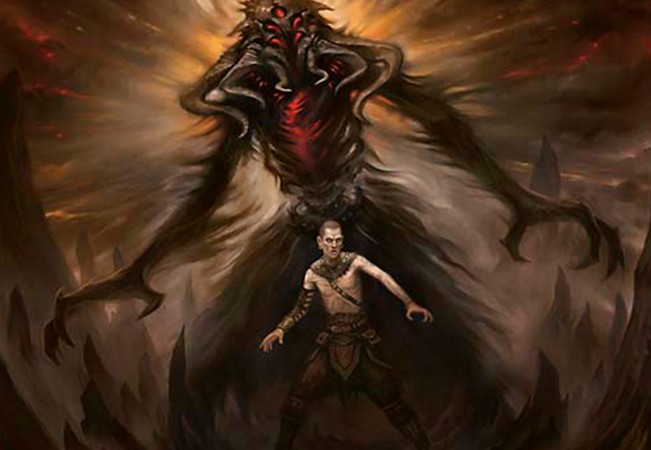Hello fellow Modern Grinders, my name is Peter Shmanka. Just like yourselves, I'm looking for edges to win local tournaments to qualify for RPTQ’s. I won’t bore you with specific details, or a matchup analysis in this specific article. Instead, I’m going to begin by explaining my overall philosophy of the deck and Magic in general. Then I'll present my rhetoric that if you choose to sleeve up Death’s Shadow, contrary to popular belief, Jund should be your weapon of choice.
To begin I'll give you some background. I miscalculated on my first PPTQ playing Affinity and decided to play instead of doing a simple draw. Justice swung down on me and I knocked myself out of the Top 8. The second PPTQ was less exciting. After doing some more playtesting, I changed a few cards in my sideboard only to endure the classic 0-2 drop. I knew locally I had only a few chances left. I started grinding on MTGO like a mad man, playing Bridgevine, Affinity, KCI, Humans, Tron... you name it. I didn’t like any of them. I had no control, and I still fell victim to my opponents’ decisions instead of my own.
It was at that moment I realized Thoughtseize was going to lead me victory. So I took the best Thoughtseize deck in the metagame bracket; The highly acclaimed Grixis Shadow. After going 3-2 in multiple competitive leagues, I thought to myself "What complete garbage."
I watched all my replays, checking to see if I could identify mistakes or bad judgement calls. My openers were amazing some games, and I had a hard time identifying why I had no opportunities to close out games or disrupt the ones to gather more time. For most games, it simply felt as if I could all in my hand for a Gurmag Angler only for it to get Terminated. I started to think what decks I've played in the past that had a good matchup against Control and Combo with some commonly known Aggro decks. Then I thought back to GP Toronto, I played Jund Shadow back then, took the list, played a few queues, then a few more… and a few more…
Before I knew it, I settled on a decklist. I felt good about it, and I mean really good. I’ve only had that type of feeling a few times in constructed tournaments. They’ve always wielded great results though. Once I won the tournament, I texted a few friends and spell slinging colleagues. The common question was “what did you win with?” I usually replied with a derogatory version of “Guess!”
Not one person got it right… Then I showed them this list.
The opinions of the circle of people I knew varied from “dumpster fire of a Modern deck” to “ur a god.”
That’s when it hit me, it may not be a good deck (though I am willing to argue that here with you today) but I’m good with the deck. I understand the deck. I understand the little niche plays, I understand how to get the most information, and I understand how to sequence all my activations. I replied to some of the more questionable comments with, “The decklist above is not your traditional midrange Jund, nor is it your Grixis Death’s Shadow. It’s the best of both.”
Accurate picture of your opponent's watching their gameplan disappearModern isn’t a format you can jump in with cold feet and expect to do well. There are some general philosophies of Magic that can apply to all formats, but those notions rarely carry the most weight. Here is a key part of not just our favourite game of Magic, but life itself that most people may not tell you: Luck is when skill meets opportunity.
The key factor of succeeding in Magic is to play within the lines. Understand that you must be willing to that accept no matter how skilled or unskilled your opponent is, that is not the sole factor of who should win the match. If you have lots of opportunities and no skill, you won’t succeed. If you have lots of skill but never place yourself in a position to have opportunities – same thing. Present your opponent with a puzzle, and attempt to solve the one they present to you. Remove your self entitlement, remove any negative emotions, and simply challenge yourself.
Now with all the holistic philosophy out of the way, let’s dive right into crux of it.
I’m going to argue today that Grixis Shadow is a trap this Modern season if you're trying to compete in your local PPTQ’s. I understand Grixis is the most commonly played version of the deck. Therein lies the issue. The cogs of the Grixis deck don’t function in an optimal way, which puts you at a loss against most of the Modern metagame. It only took me a few matches to feel how clunky this deck can potentially be.
For example, having two Gurmag Anglers with no Thought Scour completely turned me off from the playstyle the deck prioritizes. This is Modern, a format where unstoppable forces collide into unmovable objects. Primarily, Grixis has this cliché that attracts players who want to outsmart their opponent with a weird combination of proactive and reactive cards. Being reactive in Modern is rare, it's only accepted in Azorious and Jeskai Shells currently, and that topic alone has a large amount of hot debate. Grixis Shadow as a whole simply reacts too much for next to no benefit, and when the metagame doesn’t align with how Grixis Shadow wants to react, it just performs poorly. Jund capitalizes on the cogs similar to both decklists for a proactive gameplan. For reference, the cogs in current Shadow lists are Mishra’s Bauble, Faithless Looting, and Street Wraith.
For the next section of the article, I will be comparing two relevant creatures featured in both decks: Gurmag Angler and Tarmogoyf. I will consistently compare them to show how philosophically different they are, and why one is currently incorrect to play when paired with Death's Shadow in the current Modern metagame.
Gurmag Angler is the creature most optimally cast on turn two, and generally more impressively than Tarmogoyf . Unless you have had multiple successes with your discard spells and cogs, that is. The problem is, Gurmag Angler just isn’t impressive on turn two and it requires lots of work on behalf of Grixis shell as a whole. If Gurmag is removed, your follow up requires even more set up. Tasigur, Gurmag, and Snapcaster require the same graveyard resources, and only Shadow itself might capitalize on the death of the Zombie Fish.
To elaborate on the cogs, it's quite a simple and visual example. Having access to Faithless Looting, Mishra's Bauble, and Street Wraith adds power to all your Tarmogoyfs and Grim Flayers, and only one Gurmag Angler. Death's Shadow is best paired with these cogs, which benefit the Green creature suite in multiples. Gurmag Angler has some slight upside. However, its greedy consequences means that it's both Grixis' best weapon, and their Achilles heel. If you can kill a 5/5, they can't really kill you in return. Death's Shadow aside, of course.
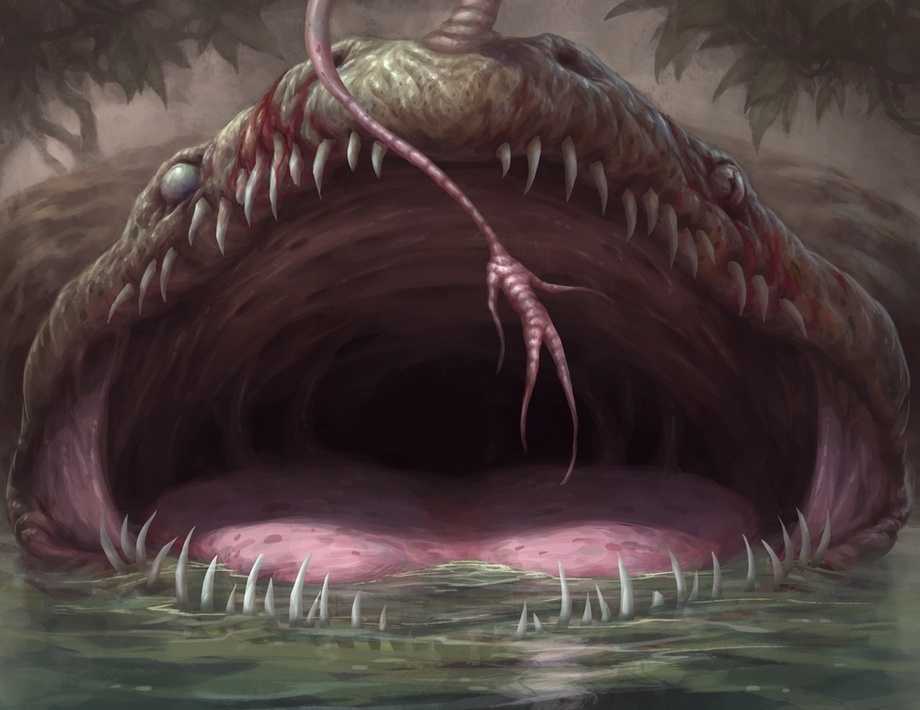
If someone was trying to sell me about how much power and disruption you could throw at me very early, I would argue you should just be playing Hollow One or Burning Inquiry. So why would someone register a decklist that has fewer potential blowouts than other decks available while requiring more resources, and being more susceptible to graveyard hate? The answer is generally Stubborn Denial, the marquee card of Grixis Shadow. The problem is that Stubborn Denial is only activated once the threat has landed. Otherwise, it's the worst poker tell in the world once your opponent shocks themselves down to 14 does nothing but simply say, "Your go."
The pay-off simply isn't that good. Countering one non-creature spell is only effective against other clunky decks. Colourless decks such as Tron or KCI will outclass you, and other decks such as Humans or Elves probably have a mass of resources and don't care about a one-mana Negate. Stubborn Denial isn't a beneficial feature of Grixis Shadow, it's a necessity in order to hold board position.
Tarmogoyf is a reliable threat against most decks currently in the format. Not just because of it’s capability in attacking the opponent and potential use of the opponents graveyard, but also because of the fact that it effectively defends against the most aggressive creatures in the format such as Hollow One, Champion of the Parish, and Vengevine.
Since there is a current lack of Fatal Push, Tarmogoyf feels more resilient than ever, backed up with your eight maindeck discard spells. There is generally only a limited window of opportunity to use soft removal, but one thing is for certain - he comes down turn two, he always costs two, and the follow up will just be as strong or stronger. The task presented by the Future Sight monster for your opponent to defend themselves is nothing short of difficult. Not only do they need to Fatal Push your Tarmogoyf, they need to cast the same level of efficient removal spells on your Death’s Shadow and Grim Flayer as well. Even if your opponent somehow succeeds in removing everything in sight, you always have Street Wraith waiting in the wings. There's no tempo loss in presenting threats when your suite includes Tarmogoyf compared to Gurmag Angler.
So if Tarmogoyf is easier to follow up, isn't Gurmag Angler more resilient? For the sake of argument let’s look at how each threat lines up with commonly seen removal in both decks comparatively:
Lightning Bolt? Only in pairs.
Fatal Push? Nope.
Dismember? Yes.
Terminate/Path to Exile? Yes.
Reflector Mage? Ouch.
Lightning Bolt? Rarely.
Fatal Push? Yes.
Dismember? More often than Bolt.
Terminate/Path to Exile? Yes.
Reflector Mage? Yes.
Removal wise, it’s debatably in the favour of Gurmag Angler. Gurmag Angler is probably an 8/10 on average if we had a theoretical resiliency scale, while Tarmogoyf is a 7/10. Most self proclaimed Modern experts will logically analyze things in such a way. So for those readers, as eluded to earlier, I have a proposal: Don’t think of how your individual threat lines up against your opponent. Think of the threat in total your deck presents.
Burn isn't Burn because of Boros Charm. It has multiple redundant components. Jund Shadow, in comparison to Grixis, will disrupt the opponent each and every turn while simultaneously landing threats. The mechanics of card filtration, selection, and piling the graveyard matters significantly more with our Grixis Cousin in order to present a threat to most decks in the metagame. That’s why Grixis will generally durdle at some point and will have to decide to either Thought Scour to be able to cast a Gurmag, or to Thoughtseize and play the threat in a future turn.
Jund Shadow doesn’t durdle. Jund Shadow is the deck that will push your opponent closer to the cliff's edge each and every turn, providing both efficient disruption and the threat of killing the opponent on turns four and five and will happily trade resources with you longer if required. The card that shines a brighter light in Jund than Grixis is definitely Temur Battle Rage. The upside for the instant win combo of Tarmogoyf and Grim Flayer is dramatically stronger than Gurmag Angler and Tasigur, the Golden Fang.
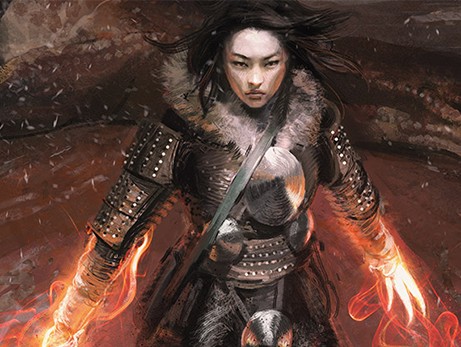
The final factor that should dissuade readers from sleeving up Gurmag Angler this season is that it loses to the hate used against the current top decks. From Blood Moon to Rest in Peace, Grixis Shadow has one out and one out only. Death's Shadow itself. The metagame is preparing for KCI, Tron, Affinity, Humans, Hollow One, Bridgevine, and other similar decks. Decks that attempt to put you out of the game on turns 2-3, but have extravagant gameplans to fight against the rising Azorious or Jeskai control decks.
Gurmag Angler will be sitting there looking at the ever growing Exile pile. Meanwhile, the 0/1 Tarmogoyf will be waiting for the Maelstrom Pulse and attack the very same turn for nearly lethal if you're a crafty Modern aficionado. The best gameplan that coincides with sleeving up Death's Shadow is to simply force your opponent to get lucky through your discard spells, and an amazing suite of GBx dedicated removal. More often than not, you will find yourself in a favourable position by being proactive and choosing to mulligan when needed to find such hands required against the array of competitors in the Modern format.
So then heeds the question; Why should Jund Shadow not splash Blue? That way we can stop the opponent from getting lucky!
The deck can easily keep all of its best features and support a splash with Stubborn Denial. As the metagame has developed, Stubborn Denial has lost lots of its inherent value, surprise factor, and has always felt “win-more” to me in a very awkward fashion during playtesting. A reasonable person could sit back and realize, "What good is counter Magic if I can barely use it without a threat landing?"
That being said, the cards I respect out of blue are Thought Scour (aka the Dark Ritual of the deck) and Snapcaster Mage. Yet to have a place in this metagame, you need to be proactive, and Grim Flayer and Faithless Looting accomplish that mission in a convincing fashion. Once you've established your early turns both Temur Battle Rage and Liliana of the Veil will carry out the end game. Both of these cards have something in common philosophically, even though one plans to end the game on the spot and the other prolongs it. These finishers reduce the number of outs your opponents could possibly have to stay alive.
Grim Flayer, Faithless Looting, Mishra’s Bauble, Liliana of the Veil, Traverse the Ulvenwald, Thoughtseize... These are all a cohesive shell that pushes consistency, resiliency, and proactiveness. Gurmag Angler, Tasigur, and even Snapcaster Mage to a degree all hold an opposite-value philosophy. They need multiple, specific cards, and are more reactive in order to be effective.
During playtesting of Grixis, Gurmag Angler and Tasigur required multiple elements and multiple turns in order to succeed. That's why you rarely see cards such as Knight of the Reliquary succeed in the Modern format. The truth is, Watery Grave acts quite similar to Temple Garden in the current Modern metagame. Gurmag Angler without Thought Scour feels like trying to cast Knight of the Reliquary without Noble Hierarch.
In order for Grixis Shadow to be a huge contender in the metagame, it needs to be either the fastest deck or the most consistent deck. And with Mox Opal, Simian Spirit Guide, Faithless Looting, and Ancient Stirrings running around, we won't be seeing that day come anytime soon.
So why should we sleeve up Death's Shadow at all? Well, it's the most effective creature in the format. And that's worth capitalizing.
Thoughtseize quickly established itself as Modern's version of Force of Will. Only shortly after, Modern had become a format that is deterministic based on board position, and Jund has the best tools to defeat decks that base themselves on that notion. With Ancient Grudge, Maelstrom Pulse, Engineered Explosives, Collective Brutality, Lightning Bolt, Pyroclasm, and Fatal Push, not many non-land permanents can stand in our way. These types of cards have had success throughout Modern's entire history, it would be a shame to not see them put to good use.
If we head into specifics of Jund Shadow the question usually arises: How good is Grim Flayer?
Short Answer? He overperforms.
For example, if graveyard hate is being played against you (which is a mistake), he filters your draws at the bare minimum. He isn’t completely dead like Tarmogoyf could be in situations, but is never as amazing either. He is Tarmogoyf’s smaller but smarter brother. Some people are lured to play cards like Rest in Peace against you, but being a decently prepared Modern player like I assume you are, you would have sided in your Maelstrom Pulses to excel in the matchup post sideboard. I would never cut him completely, and if I decided to trim him I would play Hazoret the Fervent in one of his places to help against decks that want to go over the top or try and lock you out.
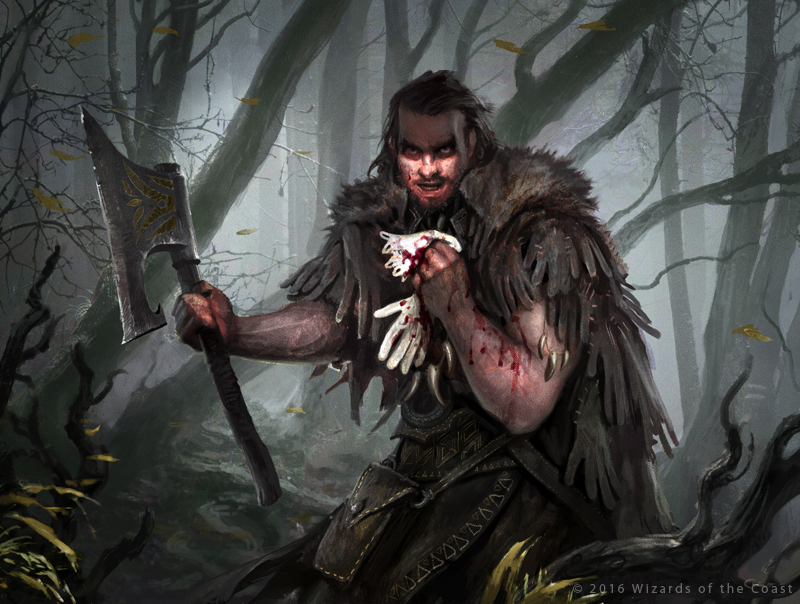
Why Faithless Looting, and where did the playset of Traverse the Ulvenwald go?
This deck philosophically wants to pin the opponent down with a damned if you do, damned if you don’t scenario. We aren't looking to go to value town. You're competing against Tron, Krark Clan Ironworks, and Humans. We aren't going to wait thirty turns to present a clock like Young Pyromancer.
Once again to highlight the importance of how this deck operates: we are looking for the correct cards, not more of them. Faithless Looting provides that, along with triggering Delirium, growing Tarmogoyf, and especially discarding late game copies of Leyline of the Void. Speaking of which, if I had to award this deck a trophy, it would be the fact that Jund Shadow is the best Leyline of the Void deck that plays the best against opposing Leylines.
At the very core of Jund Shadow, it's more of a GBx Deck. That's why you will see a versatile suite of removal and disruption. We want to make sure all of our spells have huge impact against the decks we choose to play them against. Nickle and diming your opponent won't work in this metagame. That's why we would rather run Maelstrom Pulse, not Kolaghan's Command.
Traverse the Ulvenwald is very significant in the deck. It can help find mana sources and threats. The problem is, having any opening hand with more than one copy of the card is looking for trouble. If your deck doesn't have enough cogs, Traverse the Ulvenwald acts more like Lay of the Land than it does Green Sun's Zenith. Having a few extra bodies in the form of Grim Flayer or any futuristic overpowered low cost Jund creature will prove themselves more than useful tempo-wise. Two copies is correct within the entire 75, they help smooth your draws to help you find your basics and your threats without diluting your deck so much that it becomes correct for your opponents to side in graveyard hate.
So why aren't we splashing white?
The cards generally seen are Lingering Souls and Ranger of Eos. Ranger of Eos is absolutely nutty for our deck, but he costs four, dies to every removal spell under the sun, and has some invisible text that screams "Meddling Mage these Death's Shadow's I really need to play!" Lingering Souls is another card where people want value. That value is a complete joke when your opponent simply stares at your 1/1 fliers with their Kitesail Freebooter and attacks anyway with their back up squad of Noble Hierarch, Mantis Rider, and Thalia's Lieutenant.
So the short truth is we shouldn’t be splashing anything. Nothing outside the traditional Alara combination helps our aggressive gameplan, without sacrificing our speed and resilience. If I had to pick a single card to exemplify this, it’s the basic Forest. This basic forest allows us to bypass Ghost Quarter, Field of Ruin, Blood Moon, and the potential damage from Burn. Being able to avoid non-basic hate is essential for us to be able to threaten our opponents.
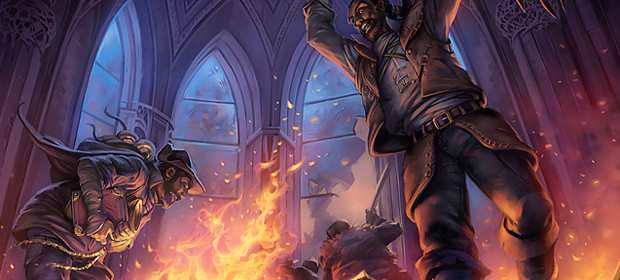
What would you change after the tournament?
There is a puzzling situation with the Dismember and Fatal Push split. It’s probably correct based on some of the bad matchups to reverse the numbers. On the other hand, other Tarmogoyfs are commonly an issue for the deck, since you do all the work and your opponent gets lots of the benefits. When playing against Humans, Meddling Mage always names the wrong card. That's why I opted for the current configuration of removal and choosing three Lightning Bolts with respect to Mantis Rider. If you find your metagame has more Reality Smasher or Chalice of the Void type decks, a second copy of Dismember is more favourable then a second Fatal Push.
Also, as I alluded to earlier, playing a split of Grim Flayer and Hazoret the Fervent would be a metagame call. Hazoret is amazing against Lantern, Azorious Control, and opposing midrange decks. Grim Flayer is simply the more well rounded card that tramples through most issues rogue decks present, and without sacrificing a removal spell from the main or side, you should stick to 10 main creature based threats.
Coming in hot from the sideboard, Alpine Moon is the recent upgrade this deck received from Core M19. It is dramatically more efficient than the previous Fulminator Mage, and has some interesting applications. You could side the card in against Hardened Scales, Affinity, or Infect and name Inkmoth Nexus to prevent any potential blow outs. That's while forcing Scapeshift and Tron decks to side in horrendous cards like Nature's Claim while you slam Tarmogoyfs and Liliana of the Veils. The Enchantment card type can also be very relevant.
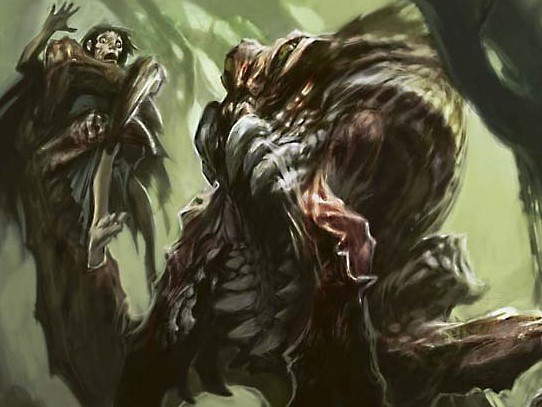
Most people will also look at the decklist and attempt to change the manabase.
Please don't. Not without extensive playtesting, at least. And if you do, let me know in the comments section as to what you did.
There is commonly a two part question; why the two Wooded Foothills, and why only six possible targets? The first part is a simple answer, Wooded Foothills is stronger than Overgrown Tomb. Plus, it's another fetch that hits Basic Forest. This makes it optimal against both decks trying to go underneath you, or do something over the top. It gives you optimal play patterns to pit yourself against Blood Moon and Goblin Guide. With only six targets for your fetchlands, you increase the chances of dealing increments of three instead of two, which is significant in landing early copies of Death's Shadow.
The worst case scenario for a prolonged game is that you would be in a situation where you are casting Street Wraith in a desperate attempt to kill your opponent. If your opponent Ghost Quartered you three times and now you can't cast your bomb of a five mana 3/4 Swampwalk, you probably made a horrendous decision earlier in the game. At most you have a total of five cards in the entire deck that cost three mana: two Liliana of the Veil, two Maelstrom Pulse, and one Engineered Explosives.
So if you decide to sleeve up this deck, don't change the mana... anything but the mana.
Hopefully at this time, I've dissuaded you from sleeving up Grixis Shadow, but more importantly, taking this classic out for a spin at your local FNM and perhaps with enough practice your local PPTQ. Thank you for reading, and hope you enjoyed the article.
Keep on Rollin'!

